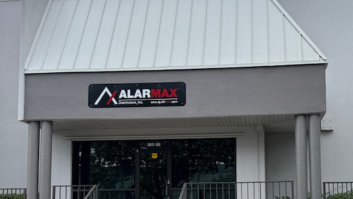Consultant Role Becomes Clearer
Recent data helps confirm how much consultants specify in the AV marketplace. The impact is clear, but the details are still a bit fuzzy.
The big study
CONSULTANTS HAVE always had to find ways to be recognized, respected, and listened to. We haven’t always been successful for a number of reasons. Sometimes our work wasn’t good enough, our clients didn’t understand what our role truly was, or there wasn’t enough data to confirm our place in the industry.
In 2001, InfoComm’s Independent Consultants in Audiovisual Technologies (ICAT) council conducted its first bid survey to find out how much work independent consultants were really responsible for. It received a fairly good response, and made it possible — through a few assumptions —to estimate how much work consultants specified each year.
The best estimates for the total size of the pro AV integration market at the time — using what we called “fuzzy math” because of the required assumptions — was about $4 billion. It was estimated that consultants were responsible for 25 to 35 percent of that figure, or a little more than $1 billion.
There have been subsequent ICAT surveys that weren’t as useful because of a relatively low response, but this year’s survey received a record response from 30 firms. This represents about a third of the independent consulting firms represented in ICAT, and probably around 10 percent of the estimated 300 pro AV-focused consulting firms in the United States and Canada, based on a few manufacturer’s lists of independent consultants. It’s still a bit low, but this creates a better basis than we’ve ever had for estimating consultants’ impact on the market.
This time we also had the benefit of the most comprehensive AV market definition study available, which InfoComm commissioned in 2004. This study put the overall AV marketplace for the U.S. and Canada at a grand total of $18.9 billion, including both integrated systems (equipment and services) and pure box sales. This number was initially met with skepticism by most consultants who weren’t familiar with the detail behind it. But now that the study is freely available to InfoComm members for analysis, we’re finding that the breakdown behind this number looks more like what we expected.
The study found that 18 percent of the $18.9 billion came from direct sales to end-users, while 82 percent ($15.5 billion) came from indirect sales. A little less than half of the $15.5 billion was distributed via retailers, online resellers, and other distribution channels.
However, 29 percent ($4.5 billion) was delivered through self-identified systems integrators, plus another 26 percent ($4 billion) via self-identified pro AV dealers. Given that system integrators will generally have some box sales, and pro AV dealers are usually a bit heavier on box sales, the total integration market (excluding box sales) probably lies somewhere between $5 billion and $7 billion.
The 2004 market study also found that 14 percent of the combined integration and pro AV dealer market was designed and specified by consultants, based on the total including box sales. Therefore, of the entire $8.5 billion channel, $1.2 billion was specified by consultants.
So far, so good, but we can extrapolate from other data in the report as well. The market study also reported the amount of pure services provided in the market, including a breakout of independent consultants’ services, which totaled $250 million. Although consultant’s fees can fall within a broad range (say, 8 to 20 percent of the integrated system cost), depending on project size, project complexity, and services rendered, 10 percent is often used as an aggregate average. These numbers bring us to a figure of $2.5 billion of specified systems — significantly more than the figure from the method above. This discrepancy can likely be explained by the diversity of services consultants offer because the ICAT surveys showed that about 40 percent of their services are data telecom or other consulting services that don’t produce AV systems. Using that number, we get about $1.5 billion in specified AV systems.
The result? Consultants specify between 17 and 30 percent of the integration market, which is consistent with the percentage range we came up with in 2001 using fuzzier numbers.
Consultant Role Becomes Clearer
Recent data helps confirm how much consultants specify in the AV marketplace. The impact is clear, but the details are still a bit fuzzy.
The ICAT bid surveysClarity with a fuzzy edge
Now let’s look at what the ICAT survey from the same time period found. In both the 2003 and 2004 ICAT surveys, the median output per consulting firm per year was around $7 million in integrated systems. Because this is the median rather than the average, the impact of a few larger firms is minimized.
The math I’m about to use is the fuzziest because we don’t have a detailed and verified total count of independent AV consulting firms and their sizes, and the bid survey respondents may be less than random because they’re InfoComm ICAT members. Nonetheless, based on the estimated 300 consulting firms, the amount specified by consultants around the time of the larger 2004 market study comes to around $2.1 billion.
This is somewhat lower, but still in line with the numbers from the market study figures. Based on the larger market study totals, this brings the low end of the range for consultant-specified AV down to 26 percent of the market, if it’s a valid number.
In the 2006 ICAT bid survey, the median output per year from the respondent pool was $5 million per company, which would calculate out to around $1.5 billion in specified systems using the logic above. This figure tends to confirm the channel breakdown from the larger 2004 study, with the big question remaining of the actual integrated, non-box-sale market size. We should get some more specific data on this in the study’s next update, which is due by early next year.
The ICAT surveys also offer more detailed information, and one promising trend is clearly indicated. It shows a move away from low-bid project awards and toward qualified bid awards from 2003 to 2006 — at least for consultant projects.
In 2003, less than a third of the bids reported were awarded in a qualified bid environment where integrators were pre-qualified and limited to a few, or awards were based on qualifications alone. In the 2006 survey, it’s more than half. This is good news for consultants and integrators alike.
Whatever the bid method, it appears that with the available data we can safely say that consultants are probably specifying about a quarter of the North American integration market. This also jives with the perceptions of a few of the mainstream AV manufacturers. The planned update to the 2004 market study will hopefully help pin down the range a bit more.
It’s interesting that some consultants feel like this is old news. My thought is that confirming our place in the market among both manufacturers and integrators — if not our own bankers — is important, and it may still be news to some of them, if not to us.
With more pro AV education and best practices available in the past few years, consultants’ roles and their impact on the market (and everyone else’s) are becoming clearer. These numbers further confirm our place in the market, but not yet with complete clarity.
“Knowledge…with clarity, it is beneficence,” wrote Austin Farrar. And more of both are on the way.
Tim Cape is a contributing editor for Pro AV, the principal consultant for Atlanta-based technology consulting firm Technitect LLC, and co-author of “AV Best Practices,” published by InfoComm International. He’s the current chairman of InfoComm’s ICAT consultant’s council, and an instructor and presenter in AV technology design and management. Contact him at [email protected].









